Opposites Attract in Home Interiors
Style for today’s residential interiors is all about contrasts and mixing it up, instead of matching everything perfectly. Old is mixed with new, modern with primitive, industrial with rustic, rough with smooth, round with square, soft with hard, blocky with leggy. The old adage about “opposites attract” is more obvious than ever.
As a helpful guideline when you remodel, first review the following basic style categories. Choose your favorite style as a backdrop for the spaces in your home, and then spice things up with some contrasts that express your own personal style. Pay careful attention to detail, giving consideration to how the colors, shapes, and patterns interplay with one another.
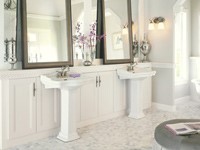
Traditional is refined and elegant, associated primarily with furniture from the 17th-18th centuries in England, and often referred to as “classical.” It usually incorporates both curved and straight lines, intricate details, inlays, and decorative trim in symmetrical and balanced proportions. Dark stained cherry wood is often used for Traditional kitchen cabinetry, but the cabinets may also be painted.
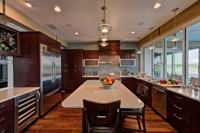
Contemporary has its roots in 20th Century Europe and the Modern architectural movement.
This movement sought to meld form and function, utilizing straight lines and simplified shapes. Evolving from the Modern style, Contemporary includes curved edges and spherical forms. A blend of natural materials, including soft leather and sleek metal, glass and stone, lends the Contemporary style a subtle elegance.
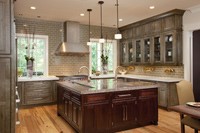
Transitional is a seamless blend of Traditional and Contemporary styles, combining straight lines along with gentle curves.
It takes a fresh approach, mixing furniture pieces, finishes, materials and fabrics from both styles. A soothing, neutral color palette and soft shapes helps create a comfortable balance. Adding gold, silver and mirror finishes brings elegance to the room.
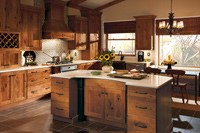
Shaker originated with a religious sect known as the “Shakers” that arrived in America from England in the 18th century. Their unadorned, spare furniture designs reflected their beliefs in efficiency, usefulness, and honesty. Cabinet doors were either stile-and-rail recessed panels with a plain inset, or flat panel. Shakers primarily used maple and cherry, with items either painted, waxed or oiled.
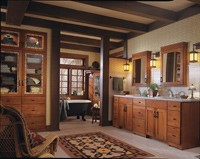
Arts and Crafts was a movement in late 19th Century Victorian England that reacted against the mass-production of home furnishings. The style emphasized the beauty of natural materials and featured artisan-made accessories of ceramics, textiles, metal and glass. In America, Gustav Stickley designed oak furniture that was often called craftsman or mission style. His furniture was solid and rectilinear, with minimal decoration and flat panels.
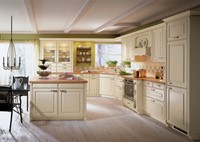
Cottage is a sub-category of Country style. Typically it carries a timeless old barn or farmhouse vibe, with exposed wood beams and wood floors. Distressed wood and heavy copper or iron are frequently used. Worn country antiques may be used as décor, along with natural materials from the outside that add texture. The color palette is warm and soft, with light-colored cabinetry. The look is lived-in and cozy.


There are no comments yet, but you can be the first